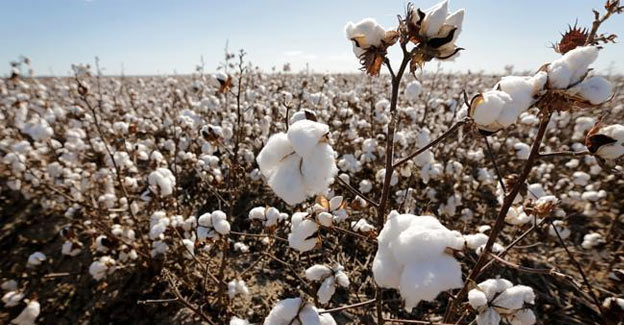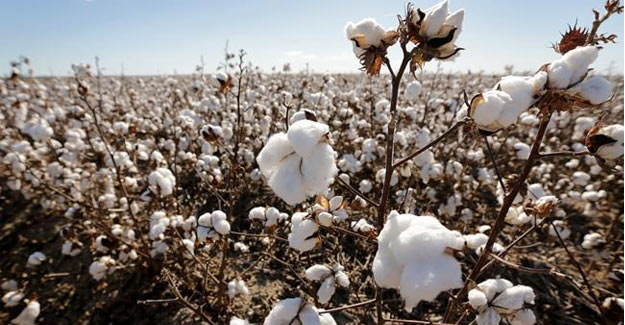
Cotton Economy Starts Recovery
In March this year, Joe Nicosia, senior head, cotton and merchandising platforms, Louis Dreyfus Commodities had predicted recovery of the cotton economy. He believes cotton price could hit 80 cents a pound within two years, US cotton production could reach 20 million bales by 2020, and worldwide acreage could increase 7 to 8 million acres to meet the growing global demand for the fibre.
"Last year cotton was not worth growing at 58 cents a pound - now the price is up by 17 cents. The bear is still here, but it is evolving into a bull," he said. The reasons for the optimism are obvious. China's cotton reserves are coming down, and China will again be a major importer after 2018 or 2019, when it will have worked through most of its reserves. Cotton acreage in China is not expected to increase too much. The higher demand for cotton will thus be met by the US and India, followed by other smaller growers. And with prices getting lucrative, it will be attractive for farmers to plant more cotton. And that is exactly what cotton farmers have begun doing in the US and in India.
2017-18 US cotton crop could be biggest in 11 years
The 2017-18 US cotton crop could reach 19.2 million bales, according to a USDA World Agricultural Supply and Demand Estimates report based on a planted acreage forecast of 12.2 million and the outlook for favourable moisture conditions this spring.
The 19.2-million-bale estimate, released as part of USDA's May 10 WASDE report, would mean the 2017-18 crop would be the largest since 2006 when US growers harvested 21.6 million bales of cotton on 12.8 million acres. In the report, USDA also increased its export forecast for the 2016-17 (Aug. 1-July 31) marketing year to 14.5 million bales. USDA economists said the new number reflected higher-than-anticipated exports sales to date. Ending stocks were reduced to 3.2 million bales as a result of the increase in exports.
"Production is anticipated to rise 12% from 2016-17, based on 12.2 million planted acres as indicated in the (March 31) Prospective Plantings Report, combined with below average abandonment - due to relatively favourable moisture - and average yields," the economists said in the WASDE report.
For 2017-18 they said domestic mill use is "projected higher at 3.4 million bales, while exports are expected to fall to 14 million, as competitors' supplies grow. Ending stocks are projected at 5 million bales, or 29% of total use (due to the larger 2017-18 crop)."
Average reach 74 cents?
The marketing year average price received by producers could range from 54-74 cents per pound, according to the World Agricultural Outlook Board economists. Some technical analysts say cotton futures could still climb to 84 cents a pound this year.
India's cotton area rises 15% to 3-year high as prices rally
Cotton planting in India, the world's biggest producer of the fibre, is likely to rise by 15% in the 2017-18 marketing season to a three-year high as farmers switch away from other crops to cotton. "This year farmers received higher prices, so they are going to raise the area under cotton. We are expecting around 15% increase," said Mekala Chockalingam, chairman of the state-run Cotton Corporation of India (CCI), the biggest cotton buyer in the country.
Higher output in India could kill a rally that pushed global cotton prices to their highest in three years this month. Domestic cotton prices rose 19% from a year ago to Rs 41,300 rupees (US$ 639) per candy, following the rally in overseas prices. A 15% rise in crop area would lift India's cotton planting to around 12.08 million hectares (29.9 million acres) in the marketing year starting on October 1, highest since the 2014/15 year. That compares to 10.5 million hectares in the current marketing year, lowest in seven years.
India, which competes with Brazil, the United States and African countries in the world market, is estimated to have produced 35.1 million bales in 2016/17, up 3.8% from the previous year, according to the state-run Cotton Advisory Board. Pakistan, Bangladesh, China and Vietnam are key buyers of Indian cotton.
Cotton imports are more attractive
However, in the last few months Indian textile mills have been aggressively importing cotton due to an appreciation in the rupee. The country is likely to import a record 3 million bales in the current year. In 2015-16 season, India imported 20 lakh bales of cotton. From high moisture content, to contamination and adulteration, Indian cotton faces a number of quality issues, forcing textile mills to depend on imports. Trash content of Australian and African cotton is barely 1% compared to 3% in Indian cotton.
Moreover, continued dollar inflow into the Indian market is seen to keep the rupee strong, which would encourage imports. Imports from African countries work out cheaper for mills in south India, as opposed to purchases from traders in Gujarat, Rajasthan and Maharsthra at a premium, and the added cost of transportation. Around 80% of cotton arrivals have come in by the end of April. Around 310 lakh bales have arrived in the market, as against the total production of 341 lakh bales.
World cotton stocks are declining, production increases
The WASDE report indicated world cotton stocks are continuing to decline after reaching unprecedented levels while China placed millions of bales of excess cotton in its strategic reserve beginning in 2011. "The world 2017-18 cotton projections show a decline in stocks of 2.4 million bales, as consumption exceeds production for the third consecutive season," the report said. "Global production is expected to rise nearly 7%, despite marginally lower average yields, as area rebounds to its highest level in three years."
Production is forecast to rise in all major producing countries, led by the United States (2 million bales higher) and India (1.5 million bales higher). Meanwhile, global consumption is projected to rise by 2.3%, as a growing world economy drives mill use higher.
"Projected world trade is also raised slightly from 2016-17, as import-oriented consumers such as Vietnam and Bangladesh are accounting for a larger share of world consumption," USDA economists said. "Ending stocks are projected at 87.1 million bales, 75 percent of world consumption.
Chinese stocks falling
"Falling China stocks exceed the projected global decline while stocks outside of China rise for the second consecutive year. Despite the projected decrease, China stocks are still equivalent to more than 100% of China's total disappearance." (China's stocks reached the equivalent of 64 million bales before the government began auctioning them off in 2015.)

Textile Excellence
If you wish to Subscribe to Textile Excellence Print Edition, kindly fill in the below form and we shall get back to you with details.








